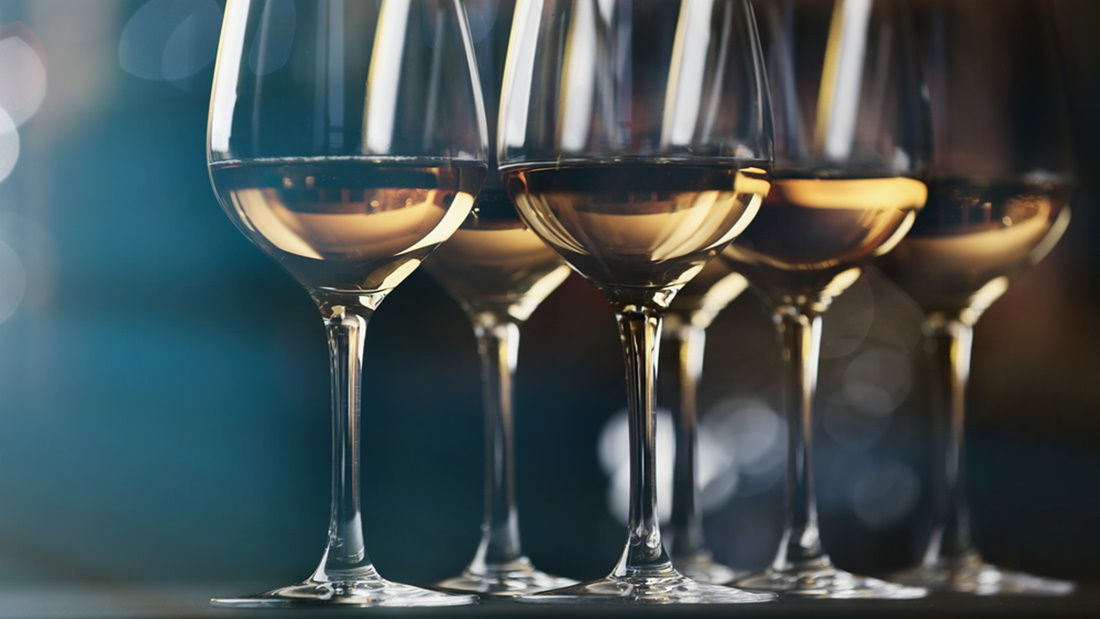
13 Oct Get Your White Wine Basics Right
White wines aren’t really true “white” in the glass; instead they could have a number of different hues ranging from light straw to deep golden yellow to green tints. The colour aspects of a white wine are derived from the grape blends or varietals that are used to make the wine. White wines are produced using the grape juice as well as the grape skins of yellowish, gold or green grapes. However, sparkling wine and champagne can be made from just the juices of select red grapes (generally Pinot Noir) and no skins are used in making them. Read on below to get your white wine basics right.
White Wine Varietals
The eight premium white varietals include:
- Chardonnay
- Riesling
- Sauvignon Blanc (or Fumé Blanc)
- Gewurztraminer
- Pinot Grigio or Pinot Gris
- Semillon
- Chenin Blanc
- Viognier
At times, you may also hear a white wine being referred to by its Old World or original name. For instance, Burgundy’s white wine is made solely from Chardonnay grapes and could be referred to as a Chablis or white Burgundy. Also, the full-bodied, sweet white wine made from Sauvignon Blanc, Muscadelle and Sémillon may be referred to as Bordeaux’s Sauternes.
How to pair white wines
White wines can be full-bodied, medium-bodied or light-bodied based on the types of grapes used and what their alcohol content is. Chardonnay is a classic example of a full-bodied white wine; Sauvignon Blancs are popular medium-bodied wines while Rieslings are generally lighter bodied. Alcohol levels will be in the range of 8% to about 14% for a large majority of white wines; the German Rieslings are at the lower end of the alcohol scale.
The acidity in white wines is what makes them particularly refreshing and food-friendly and they have an elegant taste and style compared to most red wines; this is also why there is often an exponential rise in white wine sales during the summer months. In many instances the old wine drinking norm of pairing white wine with white meats still holds true.
However, there is a vast variation in palate preferences and a number of exceptions that dictate which wines can be paired with what foods. Most people pair white wines with appetizers or lighter meals; and they may be an apéritif themselves. However, some fuller-bodied white wines pair excellently with hefty meals that are high on cream sauces and butter.
Serving white wines right
As every wine drinker knows, there are different glasses for different types of wines. Glasses that would be suitable for reds won’t work for light white wines. The latter are best served in narrow glasses that have a tapered top; this allows for greater aromatic concentration. The temperature is the other aspect to keep in view while serving white wines. A white wine served too cold will mask the wine’s nose; served too warm it will allow alcohol to overpower the aroma.
The optimum white wine serving temperature is in the range of 4°C – 7 °C. It’s always a good idea to store your wines (both white and red) in a temperature-controlled, custom wine cellar. That ensures the integrity of your wines is maintained and that you are able to enjoy your whites just the way they should be. If you are looking for an easy and quick way to chill your white wines, you won’t need more than a splash of cold water and a bucket of ice.
For any more information about white wines or custom wine cellar design and installation, you can call Signature Cellars on 02 9340 7515 or use this contact form to get in touch with us. We’ll be pleased to assist you and provide custom solutions that match your requirements.
Thanks for reading,
Neil Smallman
Signature Cellars
1300 570 636




No Comments